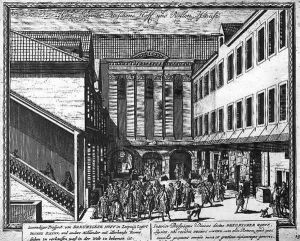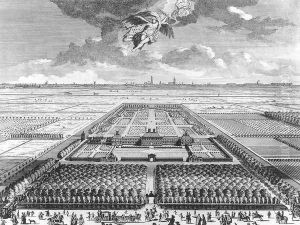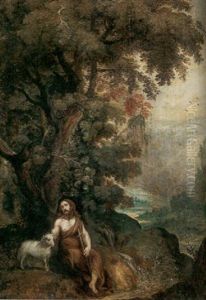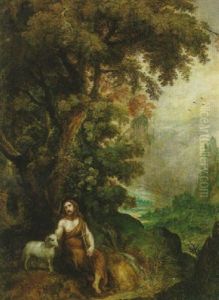Pieter Schenck Paintings
Pieter Schenck, also known as Petrus Schenck or Peter Schenk, was a Dutch Golden Age printmaker, cartographer, and publisher. Born in 1660 in Elberfeld, which is now part of Wuppertal, Germany, Schenck moved to Amsterdam as a young man, where he became a student of Gerard Valck. Both Schenck and Valck were prominent figures in the flourishing map and print trade of the late 17th and early 18th centuries, and they eventually became brothers-in-law, further cementing their professional and personal relationships.
Schenck’s work encompassed a variety of forms, including mezzotints, a printmaking process of which he was a noted practitioner, as well as etchings and engravings. His subject matter ranged from portraits and genre scenes to events of contemporary significance. However, Schenck is perhaps best remembered for his cartographic work, which includes maps, atlases, and globes. He also became known for his reproductions of other artists' works, which made him a key figure in the dissemination of artistic styles and trends.
Throughout his career, Schenck was active in the production and distribution of his works, often publishing them himself. His business acumen was evident in his establishment of a print shop in Leipzig, Germany, in addition to his Amsterdam operations, allowing him to expand his market presence throughout Europe. Schenck's maps and prints were highly regarded for their accuracy and detail, as well as for their aesthetic qualities, and they contributed to the knowledge and appreciation of geographic and artistic subjects during his time.
Pieter Schenck died in either 1718 or 1719 in Amsterdam. Despite being somewhat less well-known than some of his contemporaries, his legacy endures through the works that survive him, many of which can be found in museum collections and archives dedicated to the Dutch Golden Age of cartography and printmaking.



